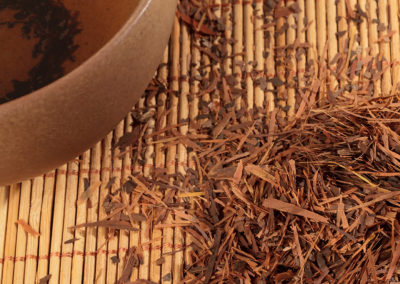Research
We study both the plants and blood plasma and cells to discover
the properties of the herbs and their actions on the body.
Medicinal Herbs
Whether using Asian, North or South American herbs, we use only top quality plants that are sustainably grown and ethically harvested.
Medicinal Herbs and Food
We are in the process of creating a laboratory for processing herbs to be used in medicine and super foods.
Pachamama
We approach our work with respect and reverence for the plant kingdom. We seek no patents or excessive profits, simply harmony for all life.
Institute for Invisible Epidemics
The Institute for Invisible Epidemics was registered in 2013. Following the disaster in Fukushima, interest was focused primarily on strategies for dealing with exposure to nuclear radiation. An informational website in both Japanese and English was started, but as denial about the risks mounted, concern shifted to the litany of risks to our health and longevity that were either unrecognized or underestimated. Patients themselves often did not know the causes, much less the cures, for conditions, some of which were incapacitating. Attention therefore shifted to these “invisible epidemics” and how to recognize and treat the symptoms. To understand this more deeply, continue with the updated text that follows.

2020
The Institute for Invisible Epidemics has had a long gestation and has been officially rebirthed in 2020 along with the affiliated Library and Academy.
The concept of “invisible epidemics” perhaps requires some explanation. The scope of what is regarded as invisible may be far wider than one might first imagine.
(1) There are serious health conditions that are either overlooked or dismissed. Examples of diseases that are seldom diagnosed are: parasitic infections in the plasma, blood cells, as well as various organs of the body; yeast and mold infections; side effects of exposure to radiation, contaminants in vaccines, components in pharmaceutical medicines, drinking water, and food. In addition, there are factors affecting health such as proximity to microwave towers, use of Wi-Fi devices such as cell phones, consumption of genetically modified food, and inhalation as well as ingestion of particulates from chemtrails.
(2) There are also diseases that are underestimated such as Lyme disease. The assumption that a course of antibiotics will cure the disease is obviously false, and people often suffer enormously before even finding a doctor to run the tests that make diagnosis possible. Patients tend to experience many complications before finally finding the help needed.
Next, there is Morgellon’s disease. Despite the obvious evidence of something serious, the condition is usually labeled delusional parasitosis.
In order to address these and other conditions, the Institute’s work will be divided between research and clinical assessment and treatment, this through close affiliation with a holistic treatment residential clinic that is independently owned and operated. The emphasis will be on use of herbal and alchemical remedies, and the main methods of assessment will involve various non-invasive tests of the blood though very thorough medical histories will always be required.
Because it is impossible to provide natural treatments for patients without access to high quality herbs, over the short-term, the needs can be met by imports; but longer-term, it is essential that there is a world class laboratory with all the individual herbs and formulas required. To meet this need, the Institute is prepared to sponsor medicinal herb collections, cultivation, and processing. Some herbs can be consciously wildcrafted from jungles or forests. Others can be grown on medicinal herb farms or in botanical gardens. We have been collaborating for years with organic farmers and permaculturists as well as specialists in biodiversity and sustainability. Working closely with farmers and wildcrafters creates important long-term relationships in which the food used in the clinic as well as the herbs grown all meet the highest standards of nutrient value, efficacy, and ecological trusteeship.
In supporting research into the value of plants, a planetary network is being developed that increases food and herb safety in the event of blights or crop failure. The Institute is already collaborating with farmers and researchers on five continents. Through better understanding of the herbs, the value of those herbs may become more appreciated so that more people become interested in herbal medicine and sustainability.
Biodiversity is, in turn, intimately related to the security of our supply of food and medicine. By growing herbs in secondary locations, there is less risk of loss of the medicines upon which we as well as our ancestors depended. Cooperation between growers promotes seed banking and seed sharing as well as cooperatives for marketing.
Thus far, much of the outreach has been focused on Latin America with secondary connections in the Caribbean and Africa. Over time, we intend to encourage more interaction between traditional and modern herbal medicine. The plan is therefore to work closely with all indigenous forms of healing and to share their understanding with those living in modern cultures.
The Institute will collaborate with existing herbal laboratories and make some of its own formulas using an extraordinary variety of herbs. Historically, 2.5 million plant species have been identified as having medicinal properties. At this time, few practicing herbalists are using more than a couple hundred herbs. We plan to study the herbs using a combination of what might be termed field work involving ethnobotanists and medical anthropologists as well as chemical analyses and clinical trials.
Finally, an important part of the Institute’s long-term work involves information. Whatever is learned and deemed to be reliable will be shared using all the modern forms of communication including paper and digital publications, online distance learning, webinars and summits, public outreach, and internship programs. All work will be well organized, archived for posterity, and shared.
In sum, the Institute will have three basic components: a research component with guest healers and interns, herbal laboratory and apothecary, and an academy. The Institute is ready to partner with kindred spirits with shared interests and a sense of responsibility towards future generations of plants and people.
We do also need tangible support in the form donations.
Many blessings,
Ingrid Naiman
Updated 19 December 2019
RELATED SITES
Privacy Policy || Report Technical Problems || Permission to Quote || Job Opportunities
Copyright Dr. Ingrid Naiman @ 2014-2020. All Rights Reserved.
For permission to quote, please contact the Institute for Invisible Epidemics.
Poulsbo, Washington, USA.


